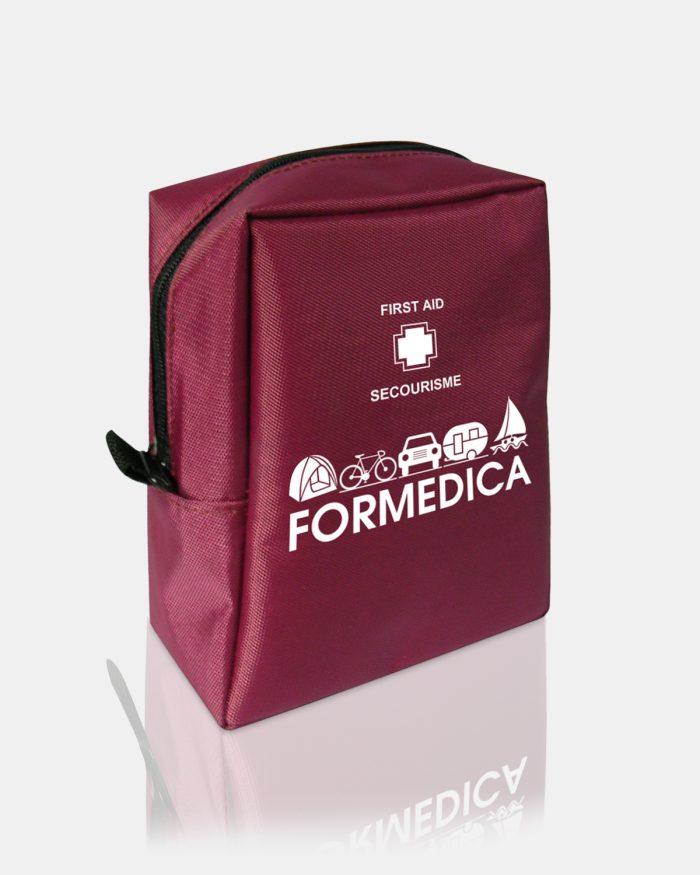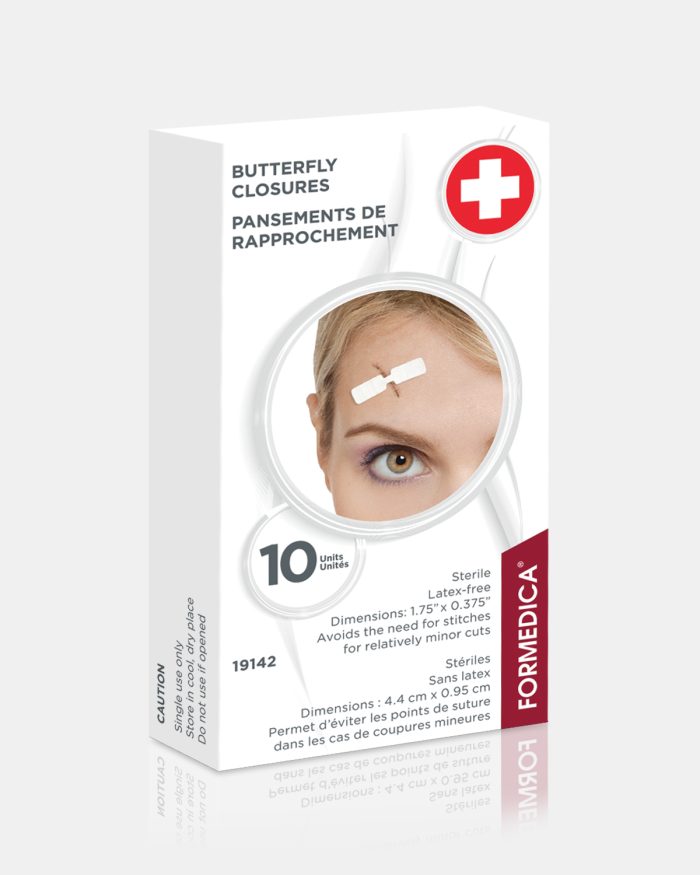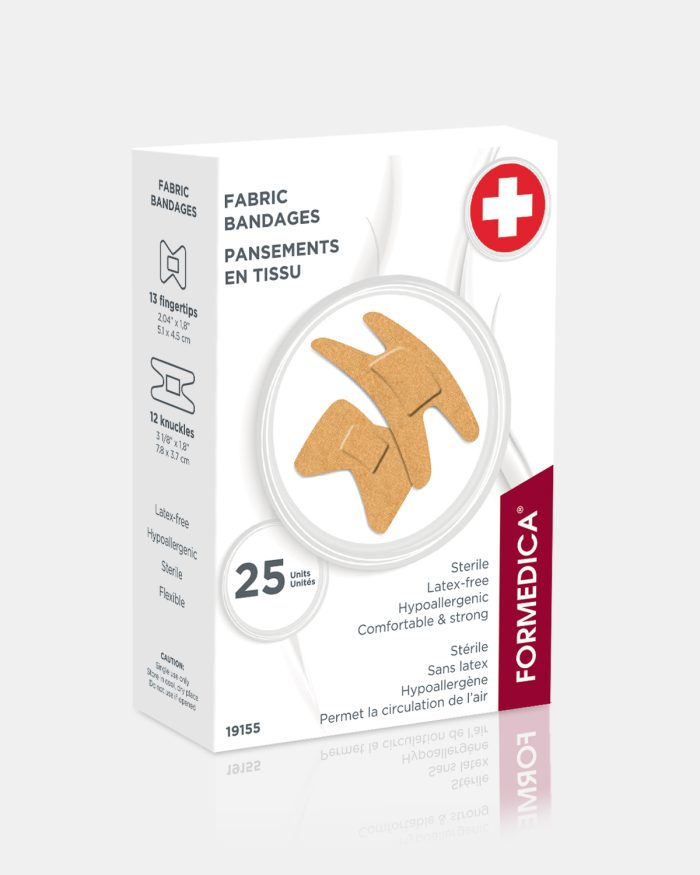It’s happened to all of us: you’re trying to cut your veggies in a rush for dinner, then one false move and OUCH! You run to the medicine cabinet which, over time, has transformed into a cemetery of half empty jars of miracle creams that never kept their promise and pills whose expiry dates suddenly remind you of how time flies. In the midst of all these relics, naturally, nothing remotely resembles a dressing. This type of incident, as annoying as it is common, is rather harmless for city dwellers with a drugstore on each street corner. However, when a minor injury breaks the charm of your romantic camping getaway, or interrupts your world-traveling adventures, you’ll end up blaming yourself for the lack of hindsight that spoiled your trip. Here are a few suggestions on what a first aid kit should contain to provide you with peace of mind, in most cases.
A first aid kit for home
Your drug cabinet should always contain these items:
- transparent surgical tape
- gauze strips and compresses of different sizes
- finger dressings
- joint dressings
- plastic covered dressings of different sizes
- cotton swabs
- security pins
- a pair of security round-tipped scissors
- a splinter clamp
- disinfectant towelettes
- alcohol tampons
- an instant cold compress
- a finger sling
- an elastic bandage
- surgical dressing
- an eye compress
- gloves
Note :
If you don’t have the time or energy to set up your own kit, there are several pre-assembled first aid kits of all types and sizes on the market. They usually include an instruction guide in case of serious injuries.
Here are some additional items that can be very useful in a basic kit:
- Alcohol-based lotion
- Hydrogen peroxide
- Antibiotic ointment
- A thermometer
- Instant ice pack
- Over-the-counter anti-inflammatory, antihistamine and analgesic tablets
First aid kit for camping
Before escaping civilisation, make sure you pack the following items:
- transparent medical tape
- gauze strips and pre-cut dressings
- finger dressings
- joint dressings
- plastic pre-cut dressings of different sizes
- cotton swabs
- security pins
- a pair of round-tipped scissors
- a splinter clamp
- disinfectant towelettes
- alcohol tampons
- an instant cold compress
- a finger sling
- an elastic bandage
- surgical adhesive dressing
- an eye compress
- gloves
- a thermal emergency blanket
- a first-aid handbook
To this, the following items may be added:
- a bottle of mosquito repellent
- hydrocortisone (for itching, swelling, and redness caused by insect bites)
- sunscreen
- disinfecting lotion
- antibiotic ointment
- a few analgesic and anti-inflammatory tablets
- a few anti-histamine tablets
- a few anti-diarrheal tablets
- a thermometer
- a flashlight with replacement batteries
A first aid kit for travelling
Don’t forget these items when you pack your luggage:
- Your prescription medication for the duration of the trip + an additional 2-day dose (in case of indigestion)
- Anti-malaria medication for the duration of the trip + an additional dose (in case of indigestion)
- Analgesic or anti-inflammatory tablets (if you’re aspirin intolerant, acetaminophen is called Paracetamol in Europe)
- Muscle relaxants
- A few laxative tablets
- A few anti-diarrheal tablets
- A few anti-nausea/travel sickness tablets
- A few decongestant tablets
- Throat lozenges
- A bottle of ear drops
- A bottle of eye drops
- Antibiotic cream
- Pre-cut adhesive dressings of different sizes
- Cotton wool, a few cotton balls, and some gauze strips
- Cotton swabs
- A few water purifying tablets
- Sunscreen
- Lip balm
- Mosquito repellent cream or lotion
- Hygienic pads
- Condoms
Note:
The first aid kit should never take up more room than a pocket dictionary. (The goal is not to get a lumbago!) However, the further you move from industrialised countries, the larger it should be:
- Antibiotic cream is essential in tropical regions where any small cut can become infected rapidly. The antihistamine cream and anti-mosquito lotion are also basic essentials in these environments.
- For the more adventurous destinations, water purifier becomes indispensable. It can be a life-saver in case of bottled water shortages.
- For trips in regions of high altitude or in countries where the climate varies greatly, decongestant tablets, throat lozenges ear drops and lip balm are required.
- In dry, dusty climates, you’ll be very happy you brought eye drops.
- Sunscreen is essential anywhere.
- Muscle relaxants can help you get a good night sleep after a long day of trekking.
References
http://www.servicevie.com/guide-de-secourisme/la-trousse-de-secours/a/2546
http://www.plusquedesmedicaments.ca/fr/article/index/First_Aid
http://www.passeportsante.net/fr/Actualites/Dossiers/ArticleComplementaire.aspx?doc=pharmacie_base_do#P15_670
http://www.voyageplus.net/bagages.html
http://www.emotionchassepeche.com/blog/trucs-astuces/trousse-de-premiers-soins-pour-le-camping/


